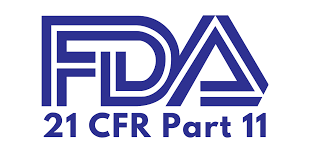Compliance is crucial. Here’s why.
Ensuring your lab adheres to key regulations means a strong chain of custody and irrefutable data

A compliant lab is a gold-standard lab. But compliance is more than just meeting set criteria – it’s about establishing a culture built on quality, safety and integrity. When a laboratory or organization meets key local, national or international standards, it fosters a safe working environment, ensures data accuracy and builds lasting trust within the industry.
In the biotech industry, regulations not only enforce good science but also provide frameworks for process optimization and continuous improvement. Key regulations and best practices include:
- Good Laboratory Practice (GLP): The Principles of GLP establish quality standards for managing test facilities; they also guide the conduct and reporting of studies on the safety of chemical substances
- Good Clinical Practice (GCP): GCP compliance ensures the integrity of clinical data on which product approvals are based, and protects the rights and welfare of study participants
- Good Manufacturing Practice (GMP): GMP regulations guarantee that medicinal products are consistently produced and controlled to quality standards
- Pharmacovigilance: The science of detecting, assessing, understanding and preventing adverse effects from medicines and vaccines
- Data integrity: The process of maintaining data accuracy, consistency and reliability
- Privacy laws: Regulations that ensure the proper handling of sensitive personal data
Adhering to regulatory standards means upholding rigorous safety protocols, protecting data integrity and supporting accurate decision-making – critical for strategic planning and successful regulatory submissions. When compliance is implemented into daily workflows, labs are better equipped to manage risk, improve efficiency and reduce operational costs.

Navigating governance in challenging environments
The regulatory world is complex, and becoming and staying compliant can be a significant undertaking. Some difficulties faced by labs include training staff to successfully adopt new standards; ensuring data security and keeping records organized and safe; and even facing divided public opinion on biotech innovations. The constantly evolving regulatory landscape can make it hard for labs to stay up to date on requirements – with varying regulations around the world posing a need for harmonization, especially for companies operating on a global scale.
To that end, labs look to governing bodies to create, set and enforce regulations. The European Medicines Agency plays a role in supporting research and innovation in the pharma sector and promotes the development of new medicines in the EU. Health Canada ensures the safety of food, health and pharmaceutical products, including the regulation of health research and pharmaceutical manufacturing/testing facilities. The International Council for Harmonisation of Technical Requirements for Pharmaceuticals for Human Use brings together regulatory authorities and pharmaceutical industry from multiple countries around the world to discuss scientific and technical aspects of drug registration.
In the US, the Food and Drug Administration (FDA) is responsible for protecting the health of the public by ensuring the safety and effectiveness of human and veterinary medicines, biologics, medical devices, cosmetics, devices that emit radiation and tobacco products. It also looks to speed the development of innovations that make medical products safer and more effective and ensures members of the public have access to accurate, science-based information.
The FDA has a hand in enforcing the Code of Federal Regulations (CFR), a coded set of laws published by the US federal government, particularly Title 21. Title 21 of the CFR is reserved for the FDA and governs food and drugs, covering a wide range of products including their design, manufacture and go-to-market.
Focusing on records management
Part 11 of Title 21 applies to drug makers, medical device manufacturers, biotech companies and other FDA-regulated industries and outlines the criteria under which electronic records and signatures are considered trustworthy, reliable and equivalent to paper records.
Some of the elements required for a laboratory to operate in a 21 CFR Part 11-compliant environment include:
- Security of electronic records: The right people must have access to the right information, and access is limited to trained, authorized individuals
- Attribution of work: The “who, what, when, where and why” of work performed must be documented such that an inspector can reconstruct the history for an electronic record
- Collection of electronic signatures: Electronic signatures are linked to records and assigned to unique individuals. This information is also present when creating printed records.
Why electronic records?
A digital shift has many benefits for a lab or an organization, such as:
- Better security: Electronic records reduce the risk or unauthorized access and prevent the misplacement of paper records
- Audit trails: Electronic records allow for a more organized history of usage in which auditors can monitor who has accessed what records and when
- Turnaround speed: Electronic records enable faster access for authorized users, streamlining workflows and reducing delays in retrieving critical information
Labs that are compliant with 21 CFR Part 11 have a strong chain of custody, with data that is kept safe and reliable. Compliant organizations must ensure the authenticity, integrity, confidentiality and irrefutability of their electronic records by documenting procedures and controls that address validation; how records are rendered for review; storage and protection; system access; audit trails; workflows; authority and device checks; staff qualifications and accountability; and document control.
How labs can more easily become compliant
Achieving and maintaining compliance requires a proactive and structured approach. There are multiple steps labs can take to work toward and uphold regulatory compliance in daily operations. To start, teams should understand and stay current on industry-specific regulatory requirements. Proper documentation – such as tracking procedures, organizing records, ensuring correct data storage and maintaining good QA/QC – plays a key role in laboratory compliance.
It is important to create a mindset in which compliance is viewed as a shared responsibility. In this type of transparent environment, teams can better support the development of clear, well-documented standard operating procedures covering everything from sample handling and equipment calibration to data recording and reporting protocols.
Regularly scheduled regulatory update check-ins and internal audits can identify gaps in the process so they can be addressed before they become compliance issues. Additionally, risk assessments are valuable in prioritizing areas that need improvement.
As labs work to stay ahead of regulatory requirements, technology plays an increasingly important role in streamlining compliance efforts, ensuring data accuracy and supporting operational efficiency. One example is the CyTOF™ XT PRO system, which provides automated compliance processes, enhanced data management and greater transparency to help facilitate large immunophenotyping initiatives. It meets regulatory needs for GLP labs by providing secure, audit-ready data management with integrated 21 CFR Part 11 compliance-enabled software and accurate electronic records of all activities. Users meet relevant requirements for clinical research while ensuring their electronic data is reliable and trustworthy, necessary for a successful submission to the FDA.
All of this allows labs to perform faster information exchange and bolster data accuracy and completeness, since meeting Part 11 standards increases the likelihood of FDA approval. It also makes organizations more environmentally friendly, creating a paperless record-keeping system that requires much less physical storage space and the use of fewer materials.
